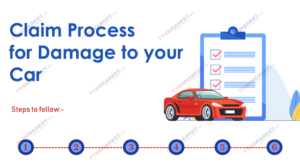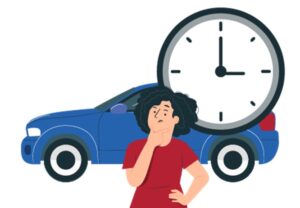Ways to Reduce Auto Insurance Costs in USA

Greetings from the savings path! It might be difficult to navigate the world of auto insurance prices in the USA, but don’t worry—we’ve got the definitive guide to assist you in reducing costs without compromising coverage. We’ll go over a number of tactics in this blog that are intended to slow down those rapidly rising premiums. Today we will discuss about Ways to Reduce Auto Insurance Costs in USA, the auto insurance claim process, some advice for accelerating your auto insurance claim, common myths and misconceptions about car insurance, and clarifying misconceptions.
These well-tested suggestions will direct you toward more reasonable vehicle insurance premiums, regardless of your driving experience. Get ready for a guide that will have your money riding shotgun in no time, covering everything from smart buying to utilizing your driving habits. So let’s get started and discover the paths leading to affordable coverage!
- Compare Quotes: Obtain quotes from multiple insurance providers. Each company uses its own formula to determine rates, so prices can vary significantly. Various insurance carriers use various algorithms, which can lead to significant pricing differences. Getting estimates from several providers sets you on a path of exploration, revealing the variety of rates and subtleties of coverage that are offered. By using a comparison approach, you can customize your insurance to meet your unique needs and discover the most affordable option. It’s a calculated move that makes sure the financial safety net you select fits both your coverage needs and your budget.
- Bundle Policies: Consider bundling your auto insurance with other policies, such as homeowners or renters insurance, to potentially qualify for a discount. The idea of “bundle policies” benefits both parties financially. In addition to streamlining your paperwork, bundling your auto insurance with homeowners’ or renters’ insurance may also qualify you for significant savings. Insurance companies frequently offer discounts for bundled products, so it’s a wise move for those on a tight budget. It’s like getting a package deal for insurance, simplifying your coverage, and keeping your hard-earned money in your pocket. Therefore, when bundling offers bundled benefits and additional savings, why choose Standalon?
- Increased Deductibles: A higher deductible usually leads to lower premiums. Just be sure you can comfortably afford the deductible in case of a claim. With “Increased Deductibles,” you may take charge of your insurance future. Choosing a higher deductible might be a strategic way to reduce your insurance costs, but you must be sure that it is within your means. Although the idea of lower premiums is alluring, it’s crucial to find equilibrium. Determine whether you can afford the higher deductible in the event that you need to make a claim. It’s a calculated risk that can result in significant savings if handled properly. So grab your seat belt and prepare for an adventure where your deductible turns into a useful instrument for negotiating affordable routes without jeopardizing your financial stability.
- Maintain a Good Driving Record: Safe driving can contribute to lower premiums. Avoid accidents and traffic violations to keep your rates down. Take over the role of the driving master and maintain a “good driving record.” It’s a covert tool for lowering your premiums as well as a monument to your skill on the road. Being safe when driving goes beyond simply preventing accidents; it also directly lowers insurance costs. You can indicate to insurers that you’re a low-risk driver by avoiding accidents and moving offenses. Smoother driving trips and smoother insurance bill figures are a win-win situation. Thus, let the highways serve as your stage, where the symphony of reasonably priced premiums is centered around your flawless driving performance.
- Ask About Discounts: Inquire about discounts for safe driving, good grades (if applicable), and other factors that may apply to you.Make “Ask About Discounts” your insurance slogan to avoid missing out on possible discounts. Asking about discounts is similar to finding a hidden treasure trove of possible financial savings. Many insurers provide savings just for you, regardless of whether you meet certain requirements, are an excellent student with high marks, or are an example of safe driving. In the realm of premiums, it’s the personal touch, since a straightforward inquiry can result in significant savings. Put on your detective cap, explore the world of discounts, and make sure your insurance reflects not just your coverage requirements but also your individual characteristics.
- Drive a Safe and Affordable Car: The type of car you drive can impact insurance costs. Generally, safer and less expensive cars have lower insurance premiums. Go ahead and save money by driving a “safe and affordable car.” Your choice of wheels matters in the insurance game; it’s not just a matter of appearance. Lower insurance rates are typically granted to vehicles that are safer and more affordable. They are viewed by insurers as low-risk drivers, which translates into friendlier figures on your insurance bill. It strikes a perfect balance between price and safety, guaranteeing that your vehicle will fit both your lifestyle demands and your budget. Thus, let your vehicle work with you to find affordable coverage as you cruise toward insurance savings.
- Consider Your Coverage Needs: While looking for affordability, ensure that the coverage meets your needs. Full coverage typically includes liability, comprehensive, and collision coverage. Make sure you have the right amount of security and money by “Considering Your Coverage Needs.” It’s an important stop along the way to affordability. Even while decreasing costs can be appealing, it’s crucial to make sure your coverage meets your needs. A complete defense against a range of hazards is offered by full coverage, which includes liability, comprehensive, and collision insurance. Adjust your policy to fit your driving style, way of life, and comfort level. In the end, achieving the ideal balance between cost and coverage is what really makes insurance what it is: a customized safety net that is both affordable and reliable
Don’t forget to customize your insurance to meet your unique needs and circumstances. Reviewing your policy on a regular basis and comparing quotes will help you make sure you’re getting the greatest value.
Auto insurance claim process

Report the Incident: The first thing you should do after an accident or damage is to notify your insurance provider. Usually, you can accomplish this by calling the insurer’s claims hotline, utilizing a mobile app, or going online. Give specifics like the incident’s description, date, time, and location.
Information Exchange: Share details with the people involved, such as names, contact information, insurance information, and car data. Get the details of any witnesses, if there are any. Document the scene with photos, if possible, to provide visual evidence.
File a Police Report: It is wise to make a police report in certain situations, particularly if there are injuries or substantial damage. When processing the insurance claim and assigning blame, this document may be very important.
Claim Adjuster Assessment: The insurance company assigns a claims adjuster to your case. The adjuster will investigate the incident, review the police report, inspect the damages, and assess the costs involved. They may also interview involved parties and witnesses.
Estimate and Repair: The insurance company evaluates the adjuster’s findings to determine whether to declare the car a total loss or to issue an estimate for repairs. The repairs will start if the estimate is approved. While some insurers let you select the repair shop, others have preferred shops.
Medical Claims: In the event that injuries occur, the medical claims procedure starts. This entails providing the insurance company with medical bills, records, and other pertinent paperwork. The kind of insurance and state laws will determine what is and is not covered for medical costs.
Resolution and Payment: The insurance provider will make a payout after the evaluation and repair procedures are finished. This can entail paying for repairs, paying for a totaled car, or paying for medical bills. The resolution process may take several weeks.
Appeals Process: If you disagree with the insurance company’s decision, there’s usually an appeals process. This may involve providing additional documentation or appealing to a higher authority within the insurance company.
The procedure for filing a car insurance claim is intended to assist people in getting over mishaps or unforeseen circumstances. Throughout the whole claims process, it is imperative that you adhere to the procedure exactly, give accurate information, and communicate with your insurance carrier in a clear and concise manner.
Some advice for accelerating your auto insurance claim

Here are some pointers to speed up the process of filing a claim on your auto insurance.
Download the mobile app for your insurance: Through their applications, a lot of auto insurance companies let drivers submit claims. While each company’s app may have different features and usability, many allow you to attach files such as written statements, images, and supporting evidence to support your claim. Certain applications facilitate the tracking of your claim’s progress.
Compile the required data prior to submitting the claim: When making a car insurance claim, the more organized you are, the faster you will find the information you need. Delays may result from omitting important information, missing uploading accident images, or not mentioning the other driver’s insurance.
Remember when things are due: The type of auto insurance claim, the insurer, and the location all affect the filing deadlines. As soon as you can after an accident, get in touch with your motor insurance provider to find out if there are any deadlines for submitting paperwork and submitting a claim. To ensure that you don’t forget the deadline, add these to your paper or digital calendar and, if at all possible, attach an alert.
Contact your auto insurance provider again. The severity of the collision, whether more than one motorist was involved, and the amount of time it takes the adjuster to go through all the paperwork can all affect how quickly a claim is settled. It’s easier to make sure everything is on track for settlement if you follow up with your insurance.
Common Myths and Misconceptions About Car Insurance

A lot of myths and misconceptions surround the subject of auto insurance. These false beliefs have the potential to cause confusion and, occasionally, to cause people to make poor decisions for themselves. Let’s dispel some of these widespread rumors and clear up any misunderstandings regarding auto insurance.
1. Myth: Red cars cost more to insure. The idea that red automobiles cost extra to insure is one that is frequently spread. The truth is that your car’s color has no bearing on your insurance costs. A driver’s history and vehicle make, model, and year are of greater interest to insurers.
2. Myth: Minimum Coverage is Always Sufficient: Some people think it’s always sufficient to choose the bare minimum of coverage. However, in the event of a serious accident, basic coverage might not provide you with enough protection. In order to improve your financial security, it’s critical to evaluate your unique demands and take into account supplemental coverage.
3. Myth: Your Insurance Covers Everything: Although insurance offers necessary protection, it does not cover every eventuality. It’s important to know the restrictions of your policy. Generally speaking, things like normal wear and tear, mechanical malfunctions, or deliberate destruction are not covered.
4. Myth: Personal Auto Insurance Covers Business Use: A personal auto insurance coverage may not protect you if you use your car for work-related travels. Commercial auto insurance is frequently necessary for business use in order to guarantee adequate coverage in the event of work-related accidents.
5. Myth: Older Drivers Always Pay More: Many insurance companies give senior citizens discounts, despite the common misconception that older drivers always pay higher prices. Older drivers can frequently receive reduced rates due to their experience and safe driving records.
Clarifying Misconceptions
1. Misconception: Speeding Tickets Don’t Affect Rates Significantly: Some people believe that a single speeding ticket won’t have a big effect on insurance costs. In actuality, fines for speeding can result in higher insurance rates, and more expensive rates may follow subsequent infractions. To keep insurance costs low, driving safely must be your top priority.
2. Misconception: Credit Score Doesn’t Affect Auto Insurance: It is true that your credit score affects how much your auto insurance costs. Credit history is a common tool used by insurers to evaluate a policyholder’s dependability. Better credit makes one more trustworthy and might result in lower insurance costs.
3. Misconception: Comprehensive Coverage Covers Everything: Even though comprehensive coverage is broad, it doesn’t address every eventuality that could arise. It is essential to comprehend the precise contents and exclusions of your policy. For instance, it usually doesn’t cover routine upkeep or mechanical failures.
It’s critical to bust these myths and clear up misunderstandings in order to make knowledgeable judgments about auto insurance. Policyholders can ensure they have the appropriate protection for their needs and can navigate the market more skillfully by being aware of the reality of insurance coverage.
I believe if you can observe my entire blog, you may get a valid idea of Ways to Reduce Auto Insurance Costs in USA, the auto insurance claim process, some advice for accelerating your auto insurance claim, common myths and misconceptions about car insurance, and clarifying misconceptions.
